How does technology pathway choice influence economic viability and environmental impacts of lignocellulosic biorefineries?
- PMID: 29163670
- PMCID: PMC5686913
- DOI: 10.1186/s13068-017-0959-x
How does technology pathway choice influence economic viability and environmental impacts of lignocellulosic biorefineries?
Abstract
Background: The need for liquid fuels in the transportation sector is increasing, and it is essential to develop industrially sustainable processes that simultaneously address the tri-fold sustainability metrics of technological feasibility, economic viability, and environmental impacts. Biorefineries based on lignocellulosic feedstocks could yield high-value products such as ethyl acetate, dodecane, ethylene, and hexane. This work focuses on assessing biochemical and biomass to electricity platforms for conversion of Banagrass and Energycane into valuable fuels and chemicals using the tri-fold sustainability metrics.
Results: The production cost of various products produced from Banagrass was $1.19/kg ethanol, $1.00/kg ethyl acetate, $3.01/kg dodecane (jet fuel equivalent), $2.34/kg ethylene and $0.32/kW-h electricity. The production cost of different products using Energycane as a feedstock was $1.31/kg ethanol, $1.11/kg ethyl acetate, $3.35/kg dodecane, and $2.62/kg ethylene. The sensitivity analysis revealed that the price of the main product, feedstock cost and cost of ethanol affected the profitability the overall process. Banagrass yielded 11% higher ethanol compared to Energycane, which could be attributed to the differences in the composition of these lignocellulosic biomass sources. Acidification potential was highest when ethylene was produced at the rate of 2.56 × 10-2 and 1.71 × 10-2 kg SO2 eq. for Banagrass and Energycane, respectively. Ethanol production from Banagrass and Energycane resulted in a global warming potential of - 12.3 and - 40.0 g CO2 eq./kg ethanol.
Conclusions: Utilizing hexoses and pentoses from Banagrass to produce ethyl acetate was the most economical scenario with a payback period of 11.2 years and an ROI of 8.93%, respectively. Electricity production was the most unprofitable scenario with an ROI of - 29.6% using Banagrass/Energycane as a feedstock that could be attributed to high feedstock moisture content. Producing ethylene or dodecane from either of the feedstocks was not economical. The moisture content and composition of biomasses affected overall economics of the various pathways studied. Producing ethanol and ethyl acetate from Energycane had a global warming potential of - 3.01 kg CO2 eq./kg ethyl acetate.
Keywords: Advanced biofuels; Biomass pretreatment; Biorefinery; Life cycle assessments; Lignocelluloses; Process simulation; Systems analysis; Techno-economic analysis.
Figures
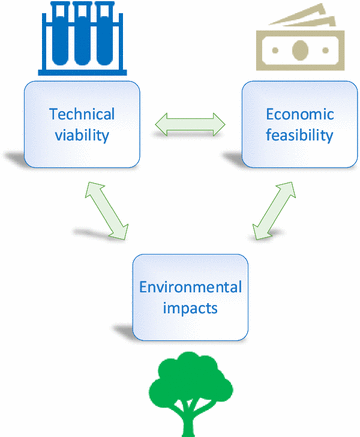
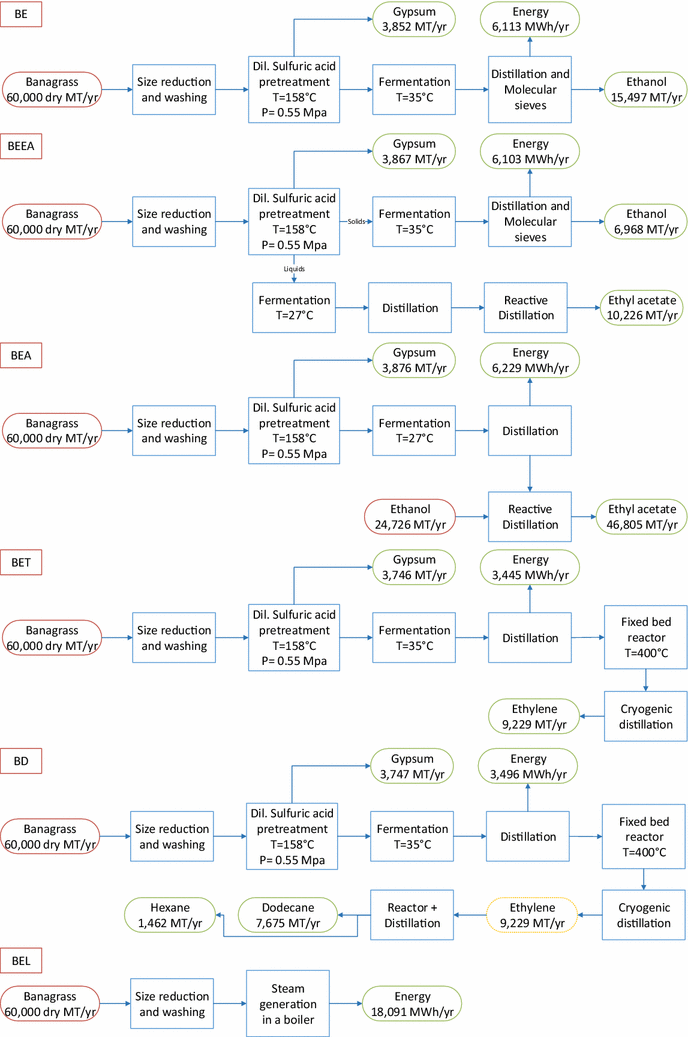
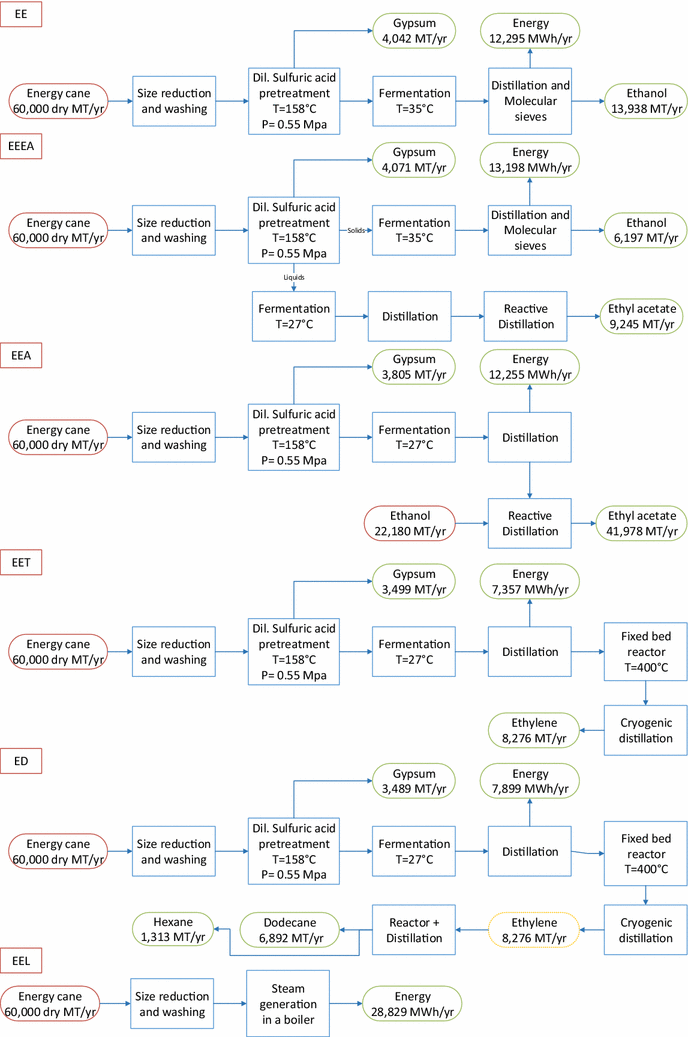
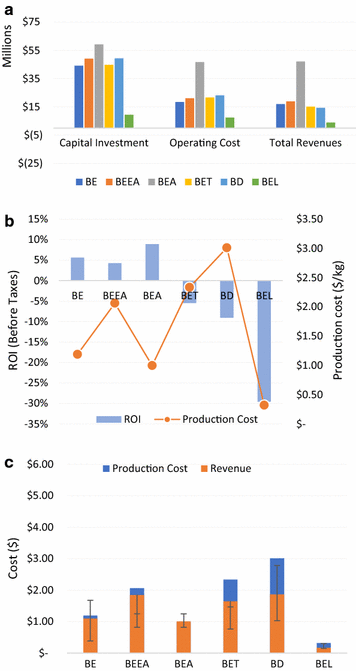
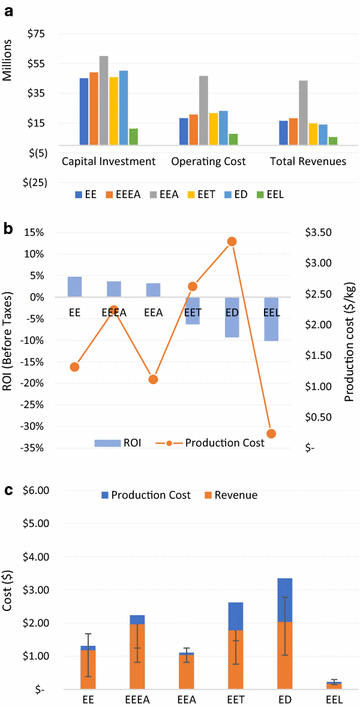
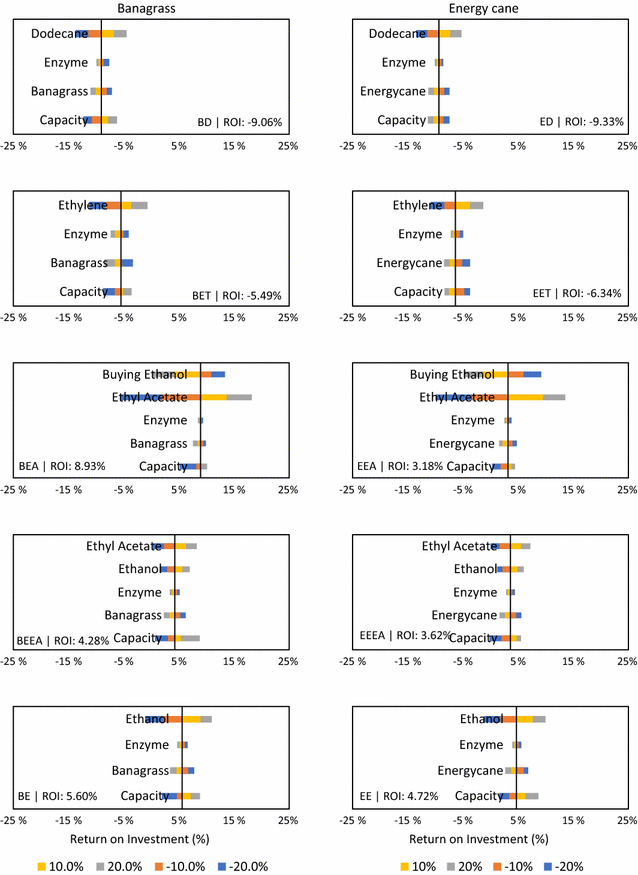
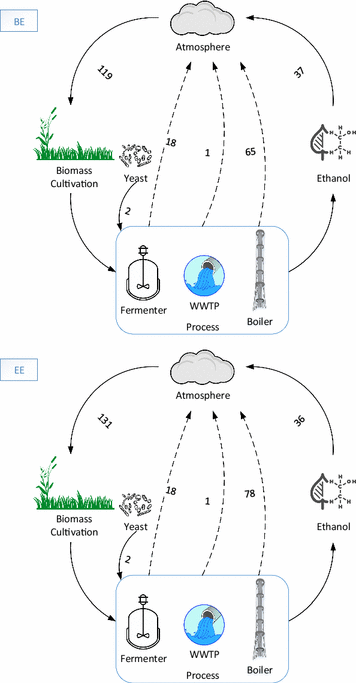
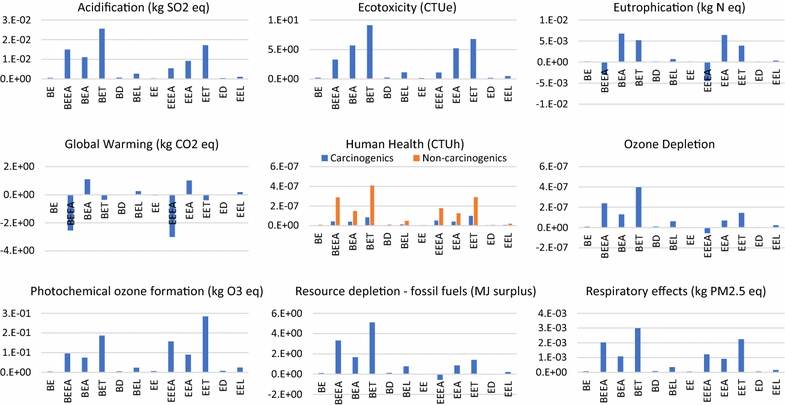
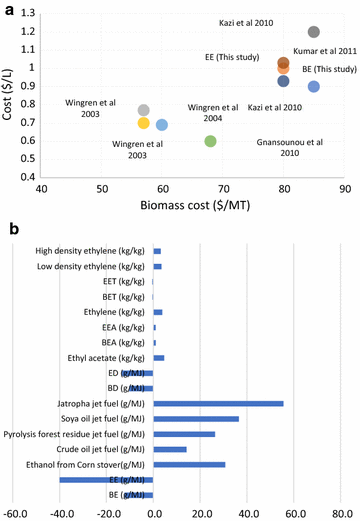
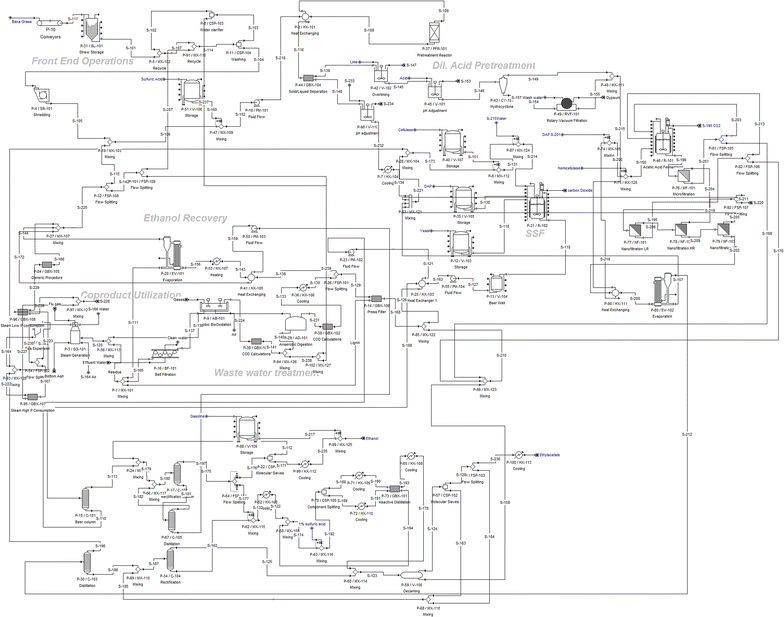
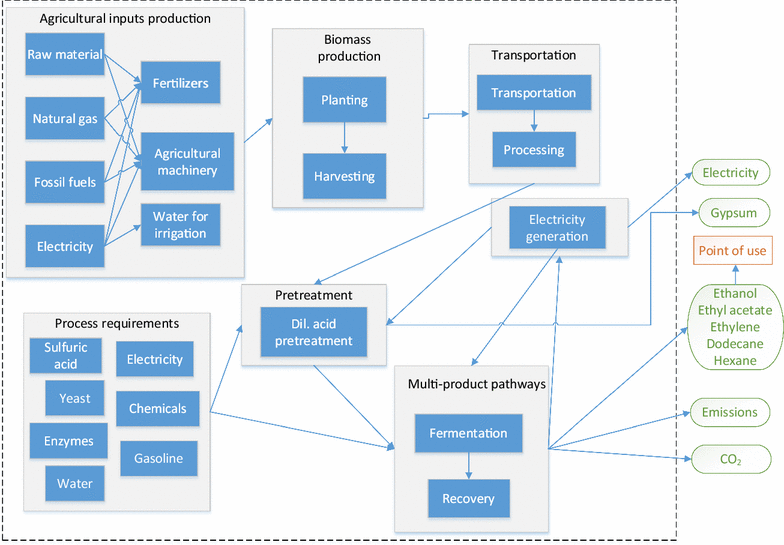
Similar articles
-
Renewable and Sustainable Biorefinery: A Patent Review.Recent Pat Biotechnol. 2025 Mar 28. doi: 10.2174/0118722083343982250312192000. Online ahead of print. Recent Pat Biotechnol. 2025. PMID: 40176690
-
Recent advances in commercial biorefineries for lignocellulosic ethanol production: Current status, challenges and future perspectives.Bioresour Technol. 2022 Jan;344(Pt B):126292. doi: 10.1016/j.biortech.2021.126292. Epub 2021 Nov 5. Bioresour Technol. 2022. PMID: 34748984 Review.
-
Engineering Ligninolytic Consortium for Bioconversion of Lignocelluloses to Ethanol and Chemicals.Protein Pept Lett. 2018;25(2):108-119. doi: 10.2174/0929866525666180122105835. Protein Pept Lett. 2018. PMID: 29359652 Review.
-
Fast Pyrolysis of Tropical Biomass Species and Influence of Water Pretreatment on Product Distributions.PLoS One. 2016 Mar 15;11(3):e0151368. doi: 10.1371/journal.pone.0151368. eCollection 2016. PLoS One. 2016. PMID: 26978265 Free PMC article.
-
Techno-economic Analysis of Sustainable Biofuels for Marine Transportation.Environ Sci Technol. 2022 Dec 6;56(23):17206-17214. doi: 10.1021/acs.est.2c03960. Epub 2022 Nov 21. Environ Sci Technol. 2022. PMID: 36409825 Free PMC article.
Cited by
-
Process simulation-based scenario analysis of scaled-up bioethanol production from water hyacinth.Biomass Convers Biorefin. 2023 Feb 13:1-16. doi: 10.1007/s13399-023-03891-w. Online ahead of print. Biomass Convers Biorefin. 2023. PMID: 36817515 Free PMC article.
-
Advances and opportunities in integrating economic and environmental performance of renewable products.Biotechnol Biofuels Bioprod. 2022 Dec 22;15(1):144. doi: 10.1186/s13068-022-02239-2. Biotechnol Biofuels Bioprod. 2022. PMID: 36550529 Free PMC article. Review.
-
Techno-economic analysis of an integrated biorefinery to convert poplar into jet fuel, xylitol, and formic acid.Biotechnol Biofuels Bioprod. 2022 Dec 20;15(1):143. doi: 10.1186/s13068-022-02246-3. Biotechnol Biofuels Bioprod. 2022. PMID: 36539896 Free PMC article.
References
-
- Short-term energy outlook. [https://www.eia.gov/outlooks/steo/report/global_oil.cfm]. Accessed 3 May 2017.
-
- Energy Information Administration (EIA). International energy outlook. EIA, 2016. p. 13.
-
- Arena M, Ciceri ND, Terzi S, Bengo I, Azzone G, Garetti M. A state-of-the-art of industrial sustainability: definitions, tools and metrics. Int J Prod Lifecycle Manag. 2009;4(1–3):207–251. doi: 10.1504/IJPLM.2009.031674. - DOI
-
- Rajendran K, Drielak E, Varma VS, Muthusamy S, Kumar G. Updates on the pretreatment of lignocellulosic feedstocks for bioenergy production—a review. Biomass Convers Biorefin. 2017
-
- Rajendran K, Taherzadeh MJ. Pretreatment of lignocellulosic materials. In: Bisaria VS, Kondo A, editors. Bioprocessing of renewable resources to commodity bioproducts. Wiley, 2014. p. 43–75.
LinkOut - more resources
Full Text Sources
Other Literature Sources

